
Best polarized sunglasses for eye protection
The coronavirus pandemic isn’t over yet, but for the first time in months, many people will finally have the opportunity to venture outside of their home…and not just for the occasional walk around the block. And since this is all happening just in time for summer, that means…sunglasses and deciding which ones are the best polarized sunglasses for eye protection.
However, before you buy a pair, there are a few things you’ll want to know about sunglasses, including the “glare factor”—that blinding light that happens when sun reflects off shiny surfaces like your car’s windshield, long stretches of asphalt, bodies of water, snow, and even buildings.
The technical word for glare is “polarized light,” according to Lynn Roye, DO, an optometrist in Brookfield, Wisconsin. “Light from the sun comes to us from all different directions,” she explains. “When it hits a flat surface, the beams of light are reflected into intense, horizontal light waves that can make it difficult, if not dangerous to see.”
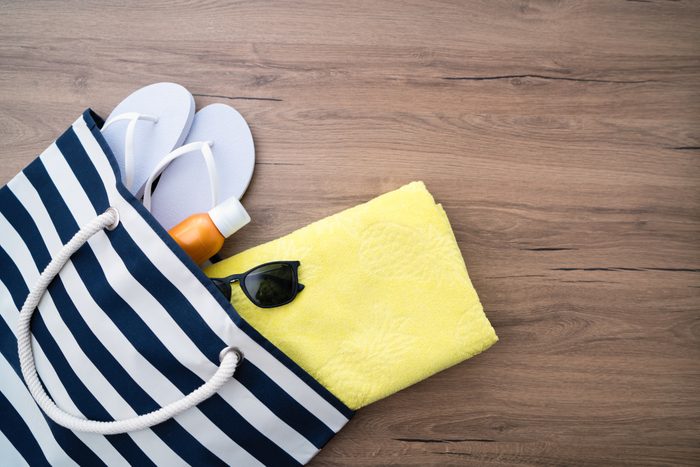
What are polarized sunglasses?
Polarized lenses, which were invented in the 1930s by Edwin Land (founder of Polaroid), have a special chemical applied to them that acts as a sort of “miniblind” for your eyes, according to the American Academy of Ophthalmology (AAO). “The chemical’s molecules are lined up specifically to block some of the light from passing through the lens,” according to the AAO. “The lenses will block out all the horizontal light waves bouncing off a smooth pond or a shiny car hood, for instance.”
As a result, what you see is crisper, clearer, and more detailed. In addition, polarized sunglasses can reduce eyestrain, notes Brad Brocwell, DO, optometrist and vice president of clinical operations for Now Optics in Palm Springs, Florida.

What polarized sunglasses don’t do
While polarized lenses reduce glare, they don’t filter out ultraviolet (UV) rays (i.e., UV-A, UV-B, and UV-C)—unless they are specially treated to do so, Roye and Brocwell point out. UV protection is important in maintaining general eye health and reducing the risk of cataracts, ocular melanoma, macular degeneration, and other eye diseases. So, if you’re shopping for sunglasses that reduce glare, you’ll also want to look for glasses with UV protection (more on this later). (Here are 10 optimal UV protection sunglasses to check out.)

Who should be wearing polarized sunglasses?
Virtually anyone can benefit from polarized sunglasses, points out Seamus Flynn, DO, an optometrist at Sapphire Eyewear, with multiple locations in Ireland. Polarized sunglasses can improve any experience in which sun is a factor, including, golf, tennis, biking, travel, sightseeing, time spent at the beach or around a pool, skiing, travel, and sightseeing.
They can also make driving safer, especially in the morning and late afternoon since, as Roye points out, “glare is at least partially responsible for the majority of daytime accidents.”

What to look for in a pair of polarized sunglasses
In addition to making sure the sunglasses are labeled “polarized,” you’ll want to follow these guidelines from the eye experts:
- Flynn suggests it’s important to look for lenses that have the polarizing chemical injected directly into, rather than painted on, the lenses. “Some manufacturers just apply a polarizing film on the front surface of the lens, and that can peel off.”
- Check the labeling and product information for 100% UV protection, which is sometimes referred to as “UV400” protection.
- If you spend a lot of time outdoors, particularly around the water or anywhere where wind is a factor, you might want to consider a pair of “wrap-around” sunglasses, which protect your eyes from the sides as well as the front.
- Some come with an anti-reflective coating on the back surface of the lens, which helps reduce the amount of light reflected off the back of the lens and into the eye. This provides an even greater level of visual acuity than polarization alone.
- Although it’s been debated whether the color of the lens matters beyond personal preference, the AAO does say that sunglasses with amber, green, or gray lenses can help increase the contrast (not block more sun), specifically in those who play baseball or golf.
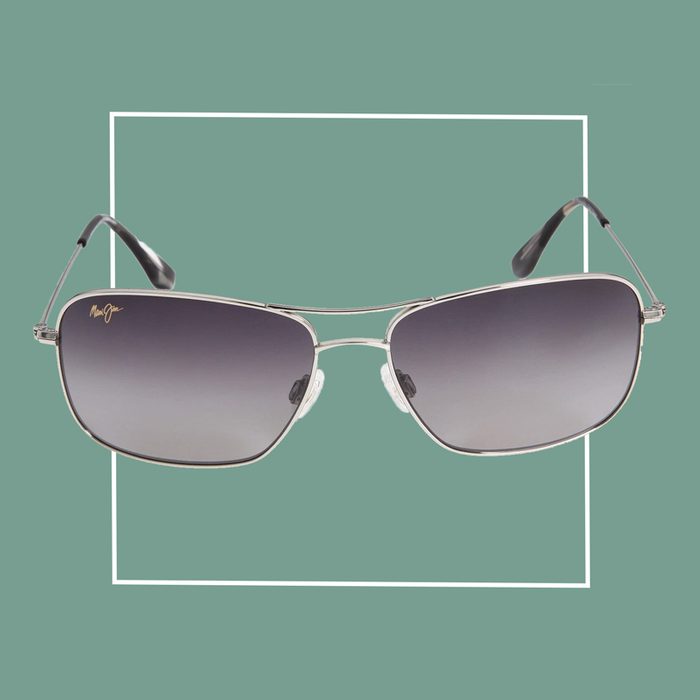
Maui Jim – Wiki Wiki
$299.99
The Maui Jim Wiki Wiki, which, like most of the sunglasses mentioned, is intended to be unisex, and is available with either grey or bronze polarized lenses. The Wiki Wiki’s lenses block the sun’s glare while allowing an appropriate amount of light to come through, and while they’re technically not “wrap-around,” they’re shaped to work from all angles to block UV rays. In addition:
- they’ve got anti-scratch protection
- they’re saltwater safe
- the titanium frame is lightweight and durable
- they’re available with a prescription as well as without.
(Please don’t fall for any of these 10 sunglass myths, which could ruin your eyes.)
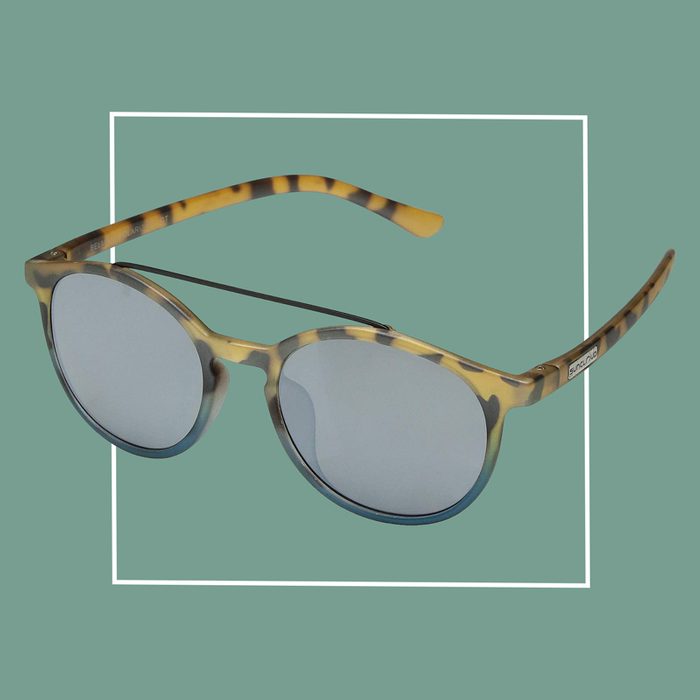
Suncloud Polarized Optics – Belmont
$49
Suncould Polarized Optics offers a budget-minded alternative for polarized sunglasses, but it’s made by Smith Optics, which is known for its high-performance sunglasses and goggles (as well as ski helmets). Its polarized lenses offer 100% UV protection, excellent contrast on even the brightest of days, and extreme durability under all conditions. The Belmont is also one of Suncloud’s more style-conscious looks and happens to look great on women. (Here are the best sunglasses for your face shape.)
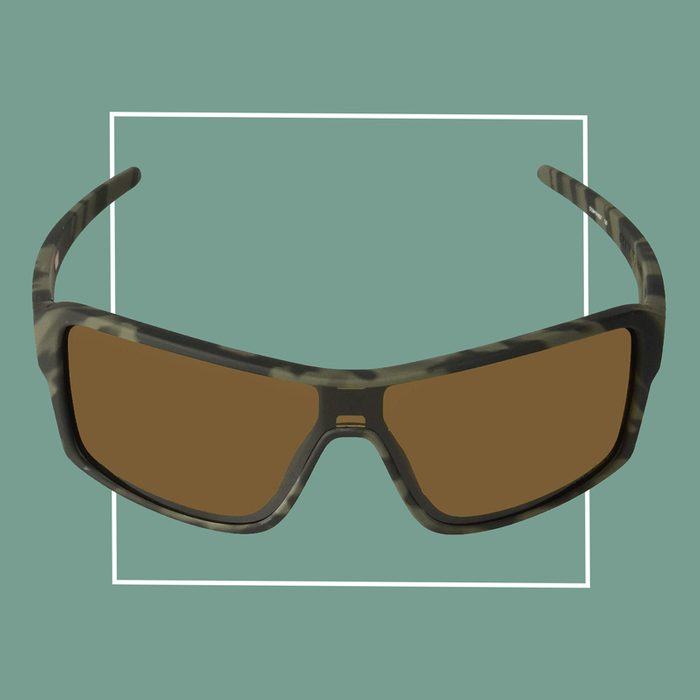
Oakley Ridgeline – Matt Olive Camo Prizm Tungsten
$196
The Oakley brand is associated with performance sports equipment, and their Ridgeline sunglasses are no exception. The technology behind their polarized lenses (not all of the Ridgeline lenses are polarized, so be sure to look for this particular lens) delivers optimal contrast in bright light conditions for multiple uses, including golf, road, trail, biking, baseball, beach and water, and daily wear. In addition to providing 100% UV protection, they also filter harmful blue light. Their frames are formulated for high durability and flexibility, and their nose pads offer a slip-proof grip for even the sweatiest conditions.
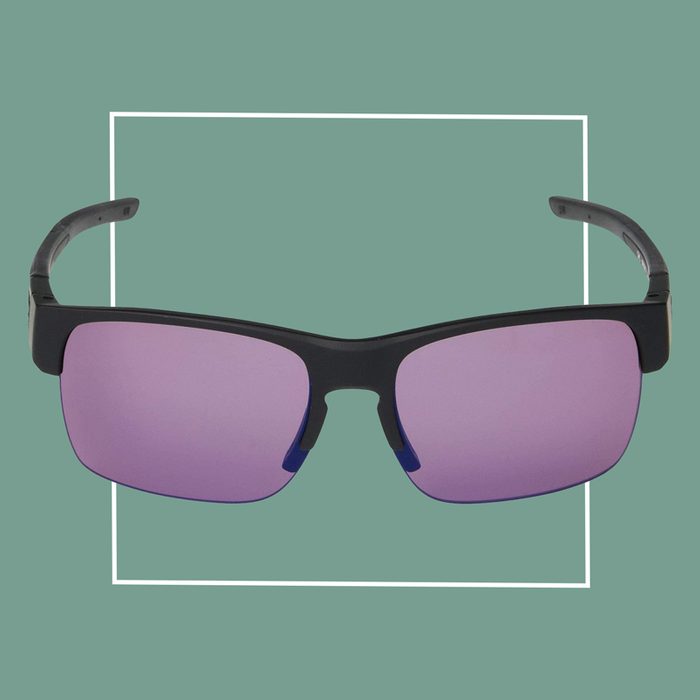
Under Armor – Beyond – Tuned Golf Lens
$114.95
We can’t promise these lenses will improve your golf swing, per se. However, they will significantly cut the glare, delivering optical clarity as you visualize the greens even under the sunniest of skies. Their wrap design will protect your eyes from UV rays coming from all angles, and their semi-frameless construction is light yet durable.
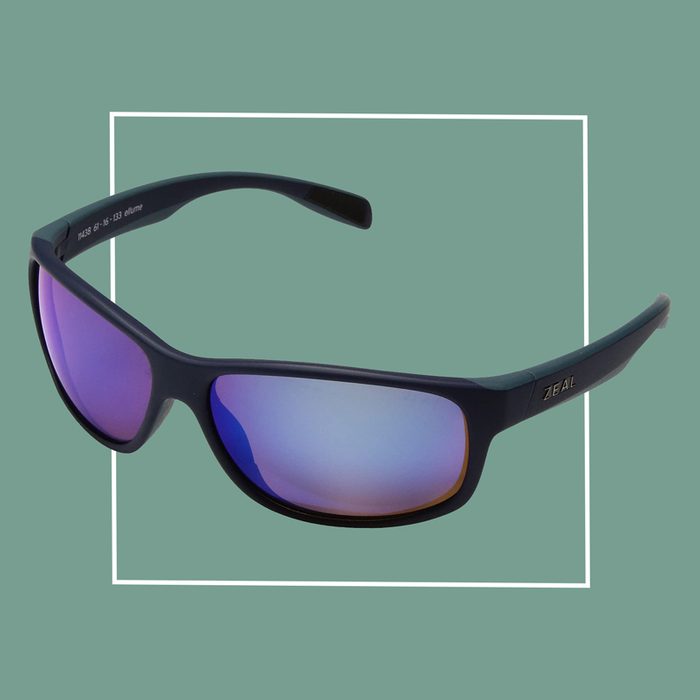
Zeal Optics – Sable
$149
While Under Armour’s Beyond sunglasses are unisex, if you’re looking for a more feminine style, then you might want to turn your attention to the Sable by Zeal Optics. These prescription-ready, polarized lenses come in this blue lens, while offering 100% UV protection. Plus, the frames are made from Z-Resin™, a plant-based material, which means you can wear these knowing you won’t be contributing to our planet’s plastic problem. (Here are 34 more facts that might make you think twice before using plastic.)
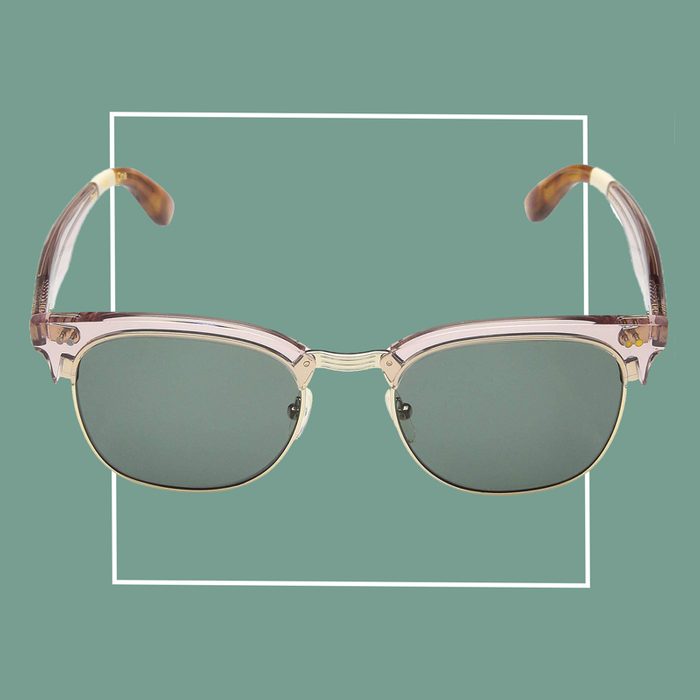
TOMS Gavin – Polarized
$109
Another socially conscious choice, this polarized pair won’t just protect your eyes from glare and harmful UV rays, but will also help TOMS give the gift of sight to a person in need. With a carnation-pink half-frame, the Gavin is a flirty and feminine take on the classic “browline” and flatters women with round and heart-shaped faces. Pliable and durable, they’re designed to bend and flex and otherwise withstand life on the move, making this a pair that’s ideal for taking with you on your travels, especially if you keep in mind these 7 tips for extending the life of your eyewear.
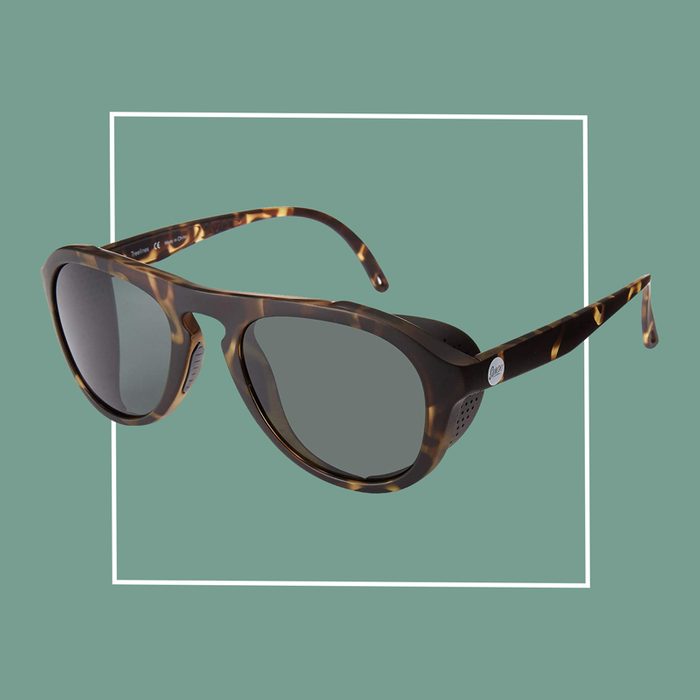
Sunski Treelines – Sidekick Collection
$89
Another socially conscious choice, all Sunskis are composed of a minimum of 20% recycled content, and the frames on this particular model are made from 100% recycled post-industrial scrap plastic from the U.S. Their green polarized lenses eliminate glare at a comparatively budget-minded price, deliver 100% UV protection, and offer perforated sunshields for wrap-around protection that breathes.
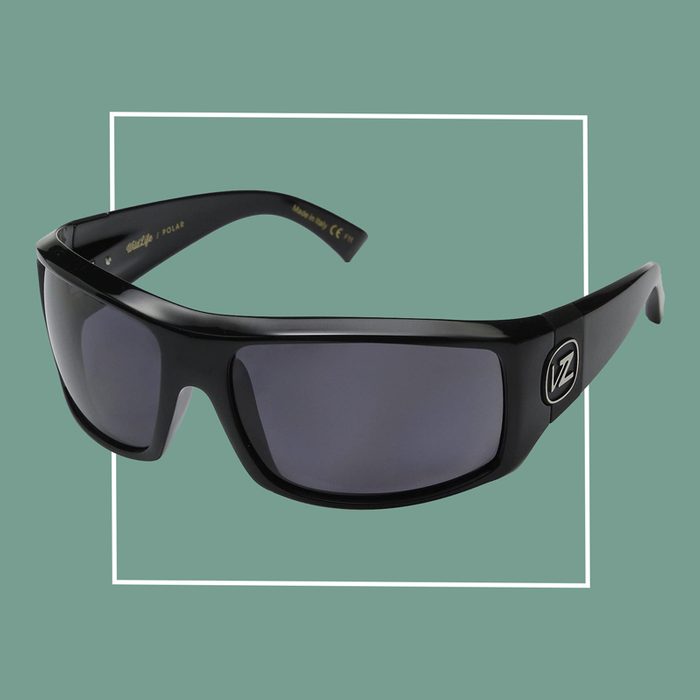
Von Zipper – Clutch
$150
Remember we talked about looking for infused polarized lenses? The VonZipper Clutch makes a point of offering three different options for infused polarized lenses:
- VPM: The VPM lens option is infused with synthetic melanin to provide enhanced UV protection and crisp vision without color distortion, which makes it perfect for golf as well as road biking. This impact- and scratch-resistant lens also blocks up to 97% of blue light and features an inner anti-reflective coating.
- VPG: The VPG lens option is 20% thinner and lighter than most polarized sunglasses. It’s also smudge-resistant, as well as scratch-resistant, delivering maximum optical clarity.
- VP3: Lightweight, impact- and scratch-resistant, the VP3 lens option offers VonZipper’s highest level of full-spectrum glare elimination.
(Here are 9 things you’ll want to know before you shop for glasses online.)
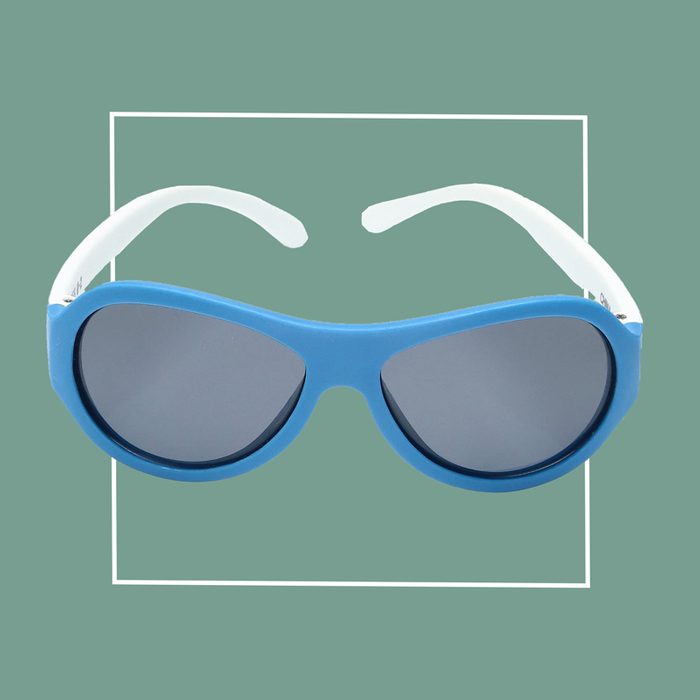
Babiators Polarized Aviator Sunglasses
$45
Babies need sunglasses too, arguably even more than people who are able to verbally articulate their ocular discomfort under bright sunny skies. Since these Babiators are polarized, they’ll provide not only 100% UV protection, but that also the comfort of glare elimination for kids ages zero to two. For safety, the lenses are impact- and shatter-resistant, and the frames are practically indestructible.
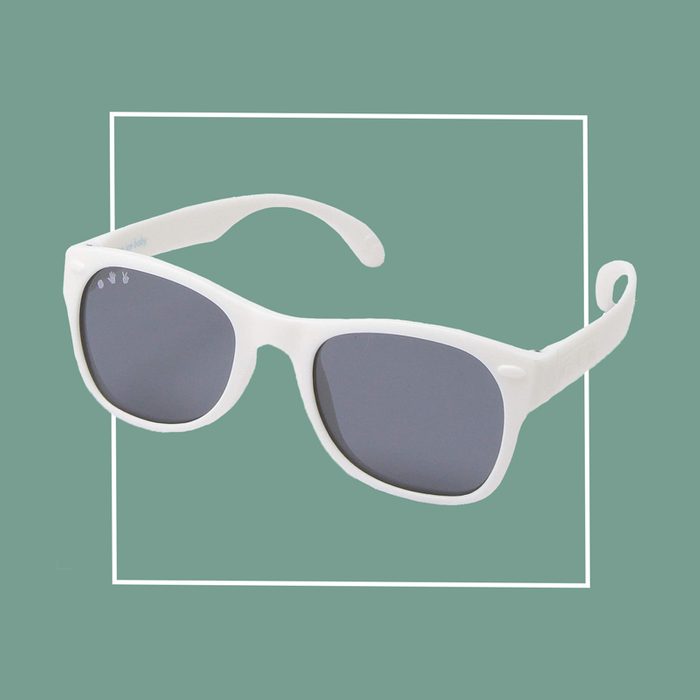
ro.sham.bo. baby – White Flexible Junior Sunglasses
$25
Don’t let the brand name fool you: These lightweight, lead- and latex-free frames are styled with kids and teens in mind, although matching versions are available in sizes for the whole family, and all are prescription ready. Their polarized lenses deliver 100% UV protection and, like the Babiators above, are practically indestructible. In fact, if anything should happen, ro.sham.bo baby offers a full damage and lens replacement guarantee. As an added benefit, a portion of all sales go to support Surfers Healing in San Clemente California, which takes children on the autism spectrum and their families out for a day of surfing and confidence building.
